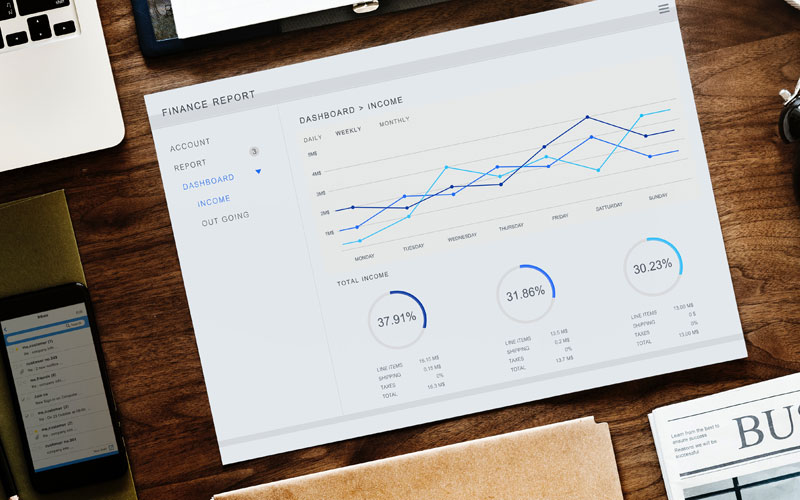Preparing and Drafting Effective Financial Reports

FA-116
Course Objectives
- Familiarizing participants with recent developments in the drafting of financial reports, and recent methods and techniques for editing and drafting performance reports.
- Enabling participants to acquire the skills to use specialized applied software in the computer, which will help them to provide readable, analytical and screening reports.
- Enabling participants to acquire participants with the skills of preparing financial performance evaluation reports, evaluating the performance of accounting systems, measuring performance and analyzing deviations.
- Empowering participants to be familiar with the experiences and applied situations in the drafting and criticizing the financial reports.
Who Should Attend?
- Heads of financial sectors, financial managers and their deputies, directors and heads of auditing, financial and banking supervision departments, and employees of these departments and sections in government departments, directors of administrative and financial affairs, directors and heads of financial departments, whether in government departments and companies or community-based organizations and employees of relevant entities in budgets such as public budget circles, accounting offices, and the financial advisors, personnel who are prepared to take up the aforementioned positions, and those who wish to develop their skills and abilities in drafting financial reports.
Course Schedule
Concept, principles and methods of the preparation and presentation of financial reports
- The concept of preparing and presenting financial reports.
- Methods and types of presentation of financial reports.
- Digital and graphical presentation of the report.
- Using the “Z” method to present the report data.
- The stages of preparation and presentation of financial reports.
Computer software used for financial reporting
- Introduction to the MS Excel.
- Introduction to the MS Access.
- Specialized applied accounting Software.
- Using MS Excel to prepare financial reports.
- Setting up a profitability map using chart Wizard.
Performance evaluation reports using financial indicators
- Performance evaluation reports for business results.
- Liquidity performance evaluation reports.
- Performance evaluation reports of the funding structure.
- Performance evaluation reports on productivity and efficiency of assets utilization.
Financial reports to assess the performance of accounting and financial systems
- Financial reports for the planning budget system.
- Financial reports of the costs system.
- Financial reports for analysis of deviations.
- Reports of deviations.
- Cost, revenue and breakeven point reports..
Performance measurement and analysis of deviations
- Preparing performance reports for accountability purposes.
- Measuring actual performance and determining the size of the deviation.
- Analyzing deviations and measuring the contribution of elements to the performance gap..
- Quantity deviation, price deviation, and usage deviation.
- Report on the effectiveness of the revenue on expenditure in non-profit units.
– Recent Processes of Auditing and Inspecting the Internal Control Systems Course16
Course Objectives
- Familiarizing participants with the modern concept of internal control and its elements and structure in accordance with the newly issued international standards.
- Providing participants with recent trends in the final audit in accordance with modern international and American standards, and how they are applied in practice in the light of the control and accounting guidance of the apparatus and offices.
- Providing participants with advanced skills in auditing and reviewing financial accounts in the light of internal and international audit guidance and standards.
- Providing participants with advanced strategies for detecting mistakes and fraud and how to apply them in practice.
- Enabling participants to acquire the skills to design, inspect and evaluate the internal control system applied in the enterprise.
- Enabling participants to acquire the skills to inspect and evaluate the systems of internal control applied in all organizations.
Who Should Attend?
- Financial managers and their deputies, account managers, heads of financial and accounting sections and those who perform closing, reviewing and auditing of final accounts and preparing or controlling of financial reports, directors and heads of Audit and review units and financial advisors, and personnel who are prepared to take over these positions, and those who are desirous to develop their skills in the field.
- Personnel who use financial information in decision-making or submitting financial reports to senior administrations
Course Schedule
Internal audit and practice
- Internal control and its applications.
- Internal audit functions.
- Internal control system and its applications..
- Internal audit types and tools.
Strategies for the design and evaluation of internal control systems for operations
- The objectives of internal control systems and their relationship to the prevention and detection of fraud and error.
- The components of the internal control system.
- The internal control system for cash operations and the Fund (receipts and payments).
- The internal control system for purchases and warehouses.
- The internal control system for wage and salary control.
- The internal control system for the covenants and the advances.
- The internal control system for revenue and expenses.
Strategies for inspecting and evaluating the structure of internal control systems in institutions
- Modern evolution in the concept of internal control.
- The structure of the modern internal control system.
- Standards of effectiveness of the internal control structure under the Sarbanes-Oxley Act.
- The role of internal audit management in the modern internal control system.
- Preliminary inspection of internal control.
- Auditing tests to inspect the internal control system.
- Criteria for the inspection and evaluation of the effectiveness of internal control.
- Procedures and phases of internal control evaluation.
- Approaches for the preparation of the Department’s report on the effectiveness of internal control.
Audit strategies in the light of international auditing standards
- Being familiar with the international auditing standards, their issuing entity and reasons for compliance with them.
- Presenting the most important international standards governing auditing and reviewing of financial accounts.
- The objective and scope of reviewing the financial statements.
- Basic principles governing review processes.
- Papers and procedures for preparing review process.
- The technical means needed to carry out the review process.
- Report of the Auditor on the financial statements.



